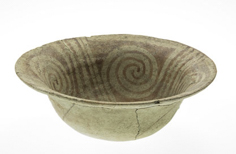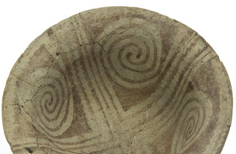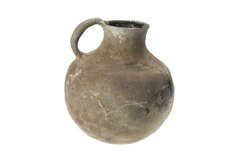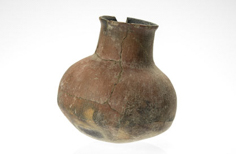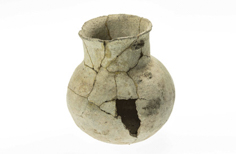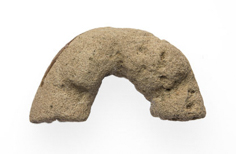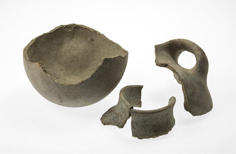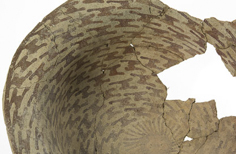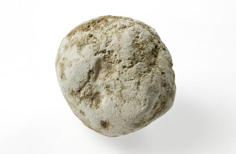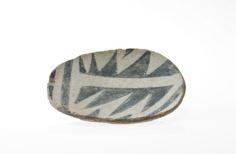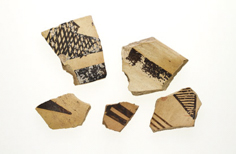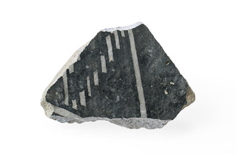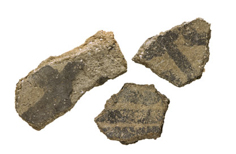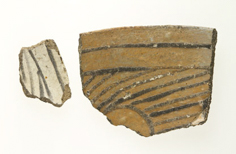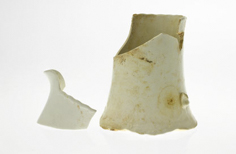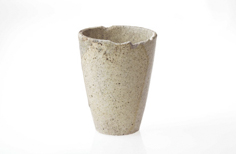Pottery Material
Clay and Silica
Circa: Pueblo II Period AD 900-1150
D 4cm
This ball of unfired clay and silica was most likely being stored for later use. Various tempers, such as sand and crushed limestone, were used in the Lake Mead area to hold the clay together while it was being fired.
Photographer: Andy Cattoir
LAKE 3832
Homer Laughlin Pitcher
Ceramic
Circa 1914
H 5", D 2" x 4 3/4" base
St. Thomas
The Laughlin Brothers, Homer and Shakespeare, formed a partnership in 1871 to sell pottery in their hometown of East Liverpool, Ohio. Their reputation for quality pottery enabled them to become one of the better known ceramic dinnerware manufacturers.
Photographer: Andy Cattoir
LAKE 20120
Homer Laughlin Pitcher
Ceramic
Circa 1914
H 5", D 2" x 4 3/4" base
St. Thomas
The Laughlin Brothers, Homer and Shakespeare, formed a partnership in 1871 to sell pottery in their hometown of East Liverpool, Ohio. Their reputation for quality pottery enabled them to become one of the better known ceramic dinnerware manufacturers.
Photographer: Andy Cattoir
LAKE 20120
Crucible
Ceramic
Circa 1876-1937
H 4", D 3", Base D 1 _"
Katherine Mine
Maker's mark: "Denver Fire Clay Co." Denver, Co 1876-1937
A crucible is a container that can withstand very high temperatures, and was used to separate metals from ore. The ore was heated inside the crucible and liquid metal was poured into a separate container.
Photographer: Andy Cattoir
LAKE 3693
